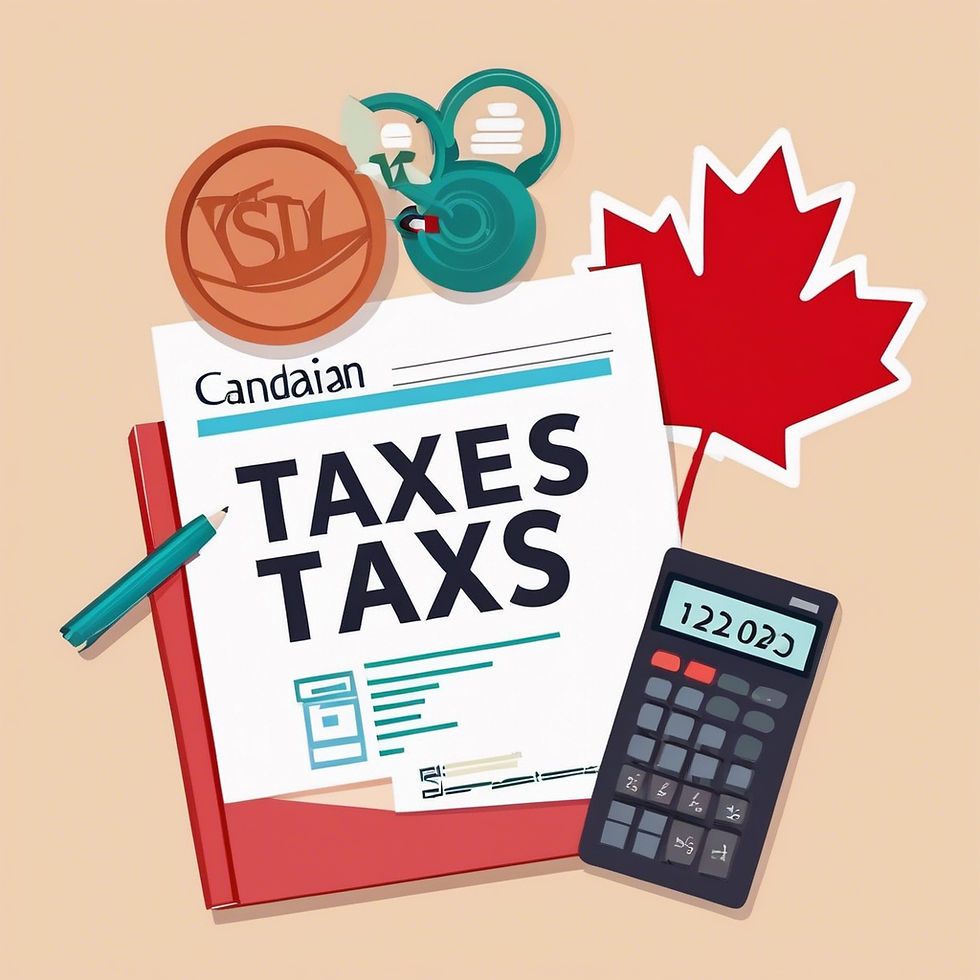Things to Know About 2025 Canadian Income Taxes
- ascenciotaxinc
- Feb 14
- 3 min read

Here are some key things to know about Canadian income taxes in 2025:
1. Tax Brackets and Rates
Canada's income tax system is progressive, meaning the rate of taxation increases as income rises. The federal income tax rates are expected to remain similar in 2025, with the following approximate tax brackets for individuals:
Up to $15,000: 15%
$15,001 to $49,020: 20.5%
$49,021 to $98,040: 26%
$98,041 to $151,978: 29%
Above $151,979: 33%
Provincial taxes are added on top of the federal tax, and each province has its own tax brackets. These rates can vary significantly depending on where you live (e.g., Ontario, British Columbia, or Quebec).
2. Canada Workers Benefit (CWB)
In 2025, eligible low-income workers may continue to benefit from the Canada Workers Benefit, a refundable tax credit designed to support individuals and families. It can offer up to $2,700 for single workers and $4,500 for families with children.
3. Changes in the Carbon Tax
The federal carbon tax, which applies to certain fossil fuels (gasoline, natural gas, etc.), is scheduled to increase in 2025. This tax is intended to encourage environmentally friendly practices. As of 2025, the price of carbon emissions is expected to rise, which could affect the cost of heating, transportation, and other goods/services that rely on carbon-intensive industries.
4. Tax-Free Savings Account (TFSA) Limit
The annual contribution limit for TFSAs is expected to increase in 2025, which allows Canadians to save more tax-free for retirement or other goals. For 2025, the limit may be $7,500 or higher, based on inflation adjustments.
5. Canada Pension Plan (CPP)
In 2025, CPP contribution rates will continue to increase as part of a plan to gradually enhance the benefits for future retirees. The contribution rate for employees is expected to rise, as well as the maximum yearly pensionable earnings (YMPE) to ensure more individuals are contributing toward their retirement.
6. Capital Gains Tax
For individuals, capital gains are taxed at 50% of the value of the gain, meaning if you sell an asset (e.g., stocks, real estate) for a profit, half of the profit is included in your taxable income. If you're selling a primary residence, it may be exempt from capital gains tax, but rules around secondary properties and rentals could result in taxable gains.
7. RRSP Contribution Limit
For the Registered Retirement Savings Plan (RRSP), the annual contribution limit in 2025 will likely be adjusted for inflation. This allows Canadians to save more for retirement in a tax-deferred account, with contributions reducing taxable income.
8. Family and Child Benefits
The Canada Child Benefit (CCB) and other family-related benefits are expected to continue providing financial assistance to eligible families. The CCB is based on income, so families with lower incomes will receive larger benefits.
9. Non-Refundable Tax Credits
In 2025, non-refundable tax credits such as the basic personal amount and credits for children, spouses, and seniors are expected to remain in place. These credits reduce the amount of taxes owed but cannot result in a refund if the credit exceeds the tax owed.
10. Medical Expenses Tax Credit
Canadians can continue to claim medical expenses as a tax credit, reducing taxable income for costs related to health and dental care. There are specific thresholds and qualifying criteria for what counts as eligible medical expenses.
11. Digital Services Tax
The digital services tax, aimed at large international tech companies, is expected to impact certain online services in Canada. If passed, this could affect the prices of goods and services provided by tech giants like Google, Amazon, and Facebook.
12. Inheritance and Estate Tax
Canada does not have a specific inheritance tax, but estates are subject to taxes upon the death of an individual. When a person passes away, their estate is subject to the deemed disposition rule, where assets are taxed as if they were sold at their fair market value, potentially creating tax liabilities for beneficiaries.
13. Small Business Deductions
Businesses, including corporations, may benefit from small business deductions that reduce their tax burden on income below certain thresholds. These deductions encourage entrepreneurship and help foster the Canadian economy.
14. Digital Filing and Tax Tools
Canada continues to encourage the use of online tax filing tools and platforms like NETFILE and EFILE. Many Canadians now file their taxes online, with the possibility of quicker refunds or processing of returns.
15. Tax Audits and Investigations
The CRA (Canada Revenue Agency) continues to focus on audits, particularly for businesses and individuals with complicated tax situations, or those showing signs of non-compliance. Keep in mind that deductions, credits, and claimed expenses should be well-documented.
Important Tip: It's wise to consult with a tax professional to stay up to date with the latest changes and tax planning strategies to maximize savings and minimize liabilities.
416 658 1208





Comments